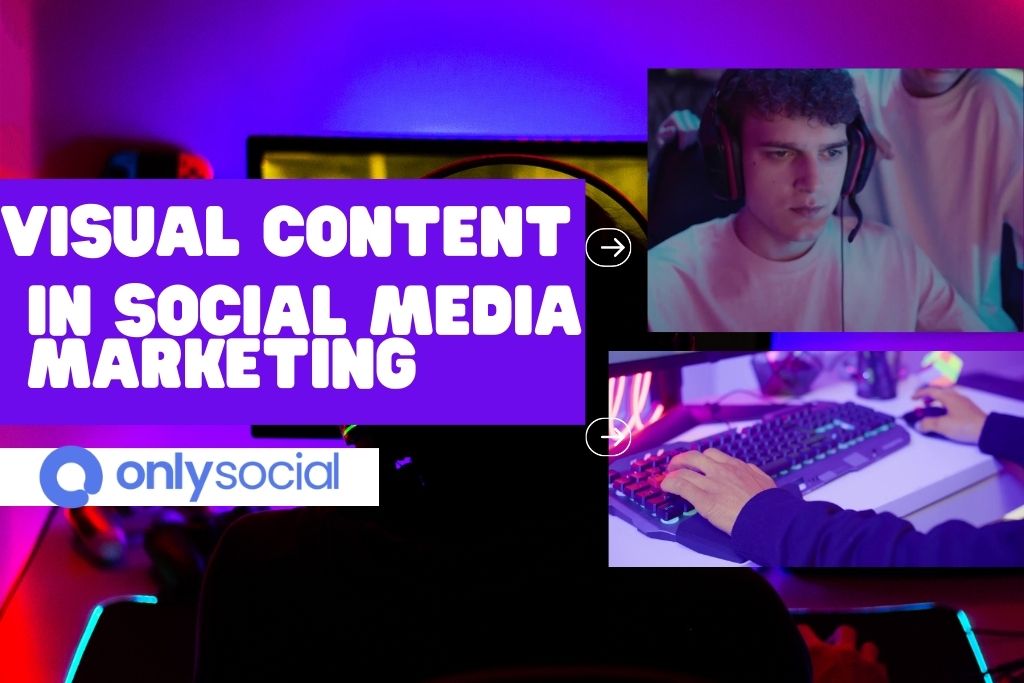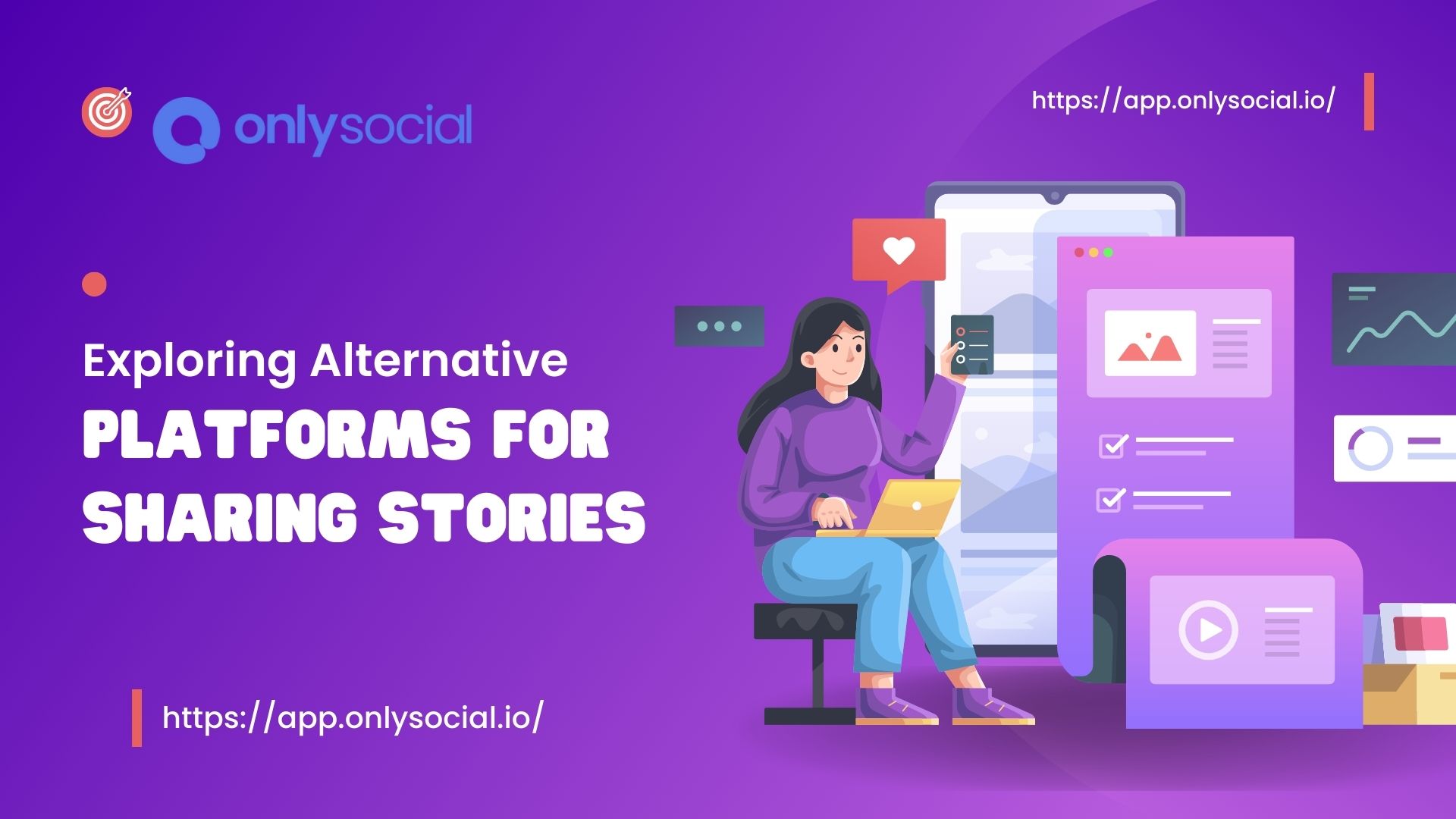In today’s fast-paced world of social media marketing, captivating your audience’s attention is crucial. Visual content has become more important than ever, making finding innovative ways to tell your story essential.
While Instagram Stories are popular, this article will explore alternative methods to create and add captivating visual narratives. By following a step-by-step guide, utilising creative tools, and integrating stories into your broader social media strategy, you’ll gain the knowledge and skills to make a lasting impact across multiple platforms.
Table of Contents
- 1 The Importance of Visual Content in Social Media Marketing
- 2 Exploring Alternative Platforms for Sharing Stories
- 3 Step-by-Step Guide to Creating Engaging Storytelling Content
- 4 Creative Tools and Features for Enhancing Your Stories
- 5 Integrating Stories Into Your Social Media Strategy
- 6 Tips for Capturing Attention With Eye-Catching Story Designs
- 7 Best Practices for Adding Stories to Your Social Media Profiles
- 8 Maximising the Impact of Your Stories: Analytics and Insights
- 9 BONUS
- 10 Frequently Asked Questions
- 10.1 How Can I Measure the Effectiveness of My Stories Using Analytics and Insights?
- 10.2 Are There Any Lesser-Known Platforms for Sharing Stories Besides Instagram?
- 10.3 What Creative Tools and Features Can I Use to Enhance My Stories?
- 10.4 How Can I Integrate Stories Into My Overall Social Media Strategy?
- 10.5 Can You Provide Tips for Capturing Attention With Visually Appealing Story Designs?
The Importance of Visual Content in Social Media Marketing

The significance of visual content in social media marketing lies in its ability to capture and engage the target audience’s attention effectively. Visual storytelling, a powerful tool within this context, allows brands to convey their messages through compelling images and videos. By incorporating visual elements into their social media posts, businesses can enhance engagement and create a stronger connection with their audience.
Visual content has proven to be more engaging than text alone because it stimulates multiple senses simultaneously. It can evoke emotions, tell stories, and convey information more efficiently than written words. According to research, visuals are processed 60,000 times faster by the brain than text. This quick processing lets users absorb information rapidly and increases their chances of remembering the content.
Moreover, social media platforms have increasingly prioritised visual content in recent years due to its popularity among users. Platforms like Instagram and TikTok heavily rely on visual media as their main form of communication. As a result, businesses that incorporate visually appealing content into their marketing strategies are more likely to succeed in capturing the attention of their target audience.
Exploring Alternative Platforms for Sharing Stories

Exploring alternative platforms for sharing visual narratives offers a way to diversify storytelling methods outside the Instagram story feature. As social media continues to evolve, it becomes crucial for content creators and marketers to adapt and find new ways of engaging with their audience.
Here are three alternative platforms that can be used for sharing stories:
- Snapchat’s ephemeral nature allows users to share visual narratives in real-time, creating a sense of urgency and exclusivity. With features like filters, stickers, and text overlays, users can enhance their stories creatively. Snapchat’s Discover section also allows brands to reach a wider audience through curated content.
- TikTok: Known for its short-form videos, TikTok has gained immense popularity among younger audiences. Its algorithm-based feed ensures that content is tailored to individual preferences, increasing the chances of organic reach. Brands can leverage TikTok’s creative tools, such as effects, music overlays, and hashtag challenges, to create engaging visual narratives.
- YouTube: While primarily known as a video-sharing platform, YouTube also offers opportunities for storytelling through vlogs or series-style content. With its vast user base and search functionality, content creators can reach a wider audience by optimising their videos with relevant keywords and tags.
Step-by-Step Guide to Creating Engaging Storytelling Content

This discussion explores the key points of visual storytelling techniques, engaging content ideas, and storytelling for brand awareness.
Visual storytelling techniques are essential in capturing the audience’s attention and conveying a compelling narrative through images and visuals.
Engaging content ideas involves creating unique and captivating stories that resonate with the target audience, fostering a sense of connection and interest.
Storytelling for brand awareness focuses on utilising narratives to enhance brand recognition and establish a strong presence in the market.
Visual Storytelling Techniques
Utilising visual storytelling techniques can enhance the impact and engagement of content presentations. Visual storytelling has become essential for brands to effectively communicate their message and create brand awareness.
Here are three key techniques that can be employed:
- Use compelling imagery: Incorporating visually appealing images and graphics can capture the audience’s attention and evoke emotions, making the story more memorable.
- Utilise effective design elements: Employing elements such as color, typography, and layout can help convey the brand’s personality and enhance the overall visual experience.
- Incorporate narrative structure: Crafting a well-structured narrative with a clear beginning, middle, and end helps guide the viewer through the story coherently while maintaining their interest.
Engaging Content Ideas
Engaging content ideas can captivate and hold viewers’ attention, increasing brand awareness and audience engagement. Exploring engaging content formats and incorporating interactive storytelling techniques is important to create such content.
Engaging content formats may include videos, infographics, quizzes, or live streams that offer valuable information or entertainment to the audience.
Interactive storytelling techniques involve creating narratives that allow viewers to actively participate or make choices within the story. This can be achieved through branching narratives, where different paths are available for viewers, or by incorporating interactive elements such as polls or quizzes into the content.
Storytelling for Brand Awareness
Storytelling plays a crucial role in building brand awareness as it allows brands to connect with their audience on a deeper emotional level and create a lasting impression. Effective brand storytelling can help businesses differentiate themselves from competitors and build strong relationships with their target market.
Here are three key storytelling techniques that can enhance brand awareness:
- Compelling narratives: Brands can use stories to communicate their values, mission, and unique selling propositions engagingly. By crafting narratives that resonate with the audience’s aspirations or challenges, brands can establish an emotional connection and leave a lasting impact.
- Authenticity: Authentic storytelling involves transparency about the brand’s history, values, and processes. By sharing genuine stories about the people behind the brand or the inspiration behind its products/services, companies can build trust and credibility among consumers.
- Visual storytelling: Incorporating visual elements such as images, videos, or infographics into brand storytelling helps capture attention and convey messages effectively. Visuals have a powerful impact on emotions and memory retention, making them valuable tools for creating memorable brand experiences.
Creative Tools and Features for Enhancing Your Stories
One effective method for enhancing stories on Instagram is through the use of various creative tools and features that are available. Incorporating these tools into your storytelling lets you capture your audience’s attention and create more engaging content.
There are several creative ideas that you can explore to make your stories stand out. For instance, stickers, GIFs, and emojis can add a playful and interactive element to your stories. These elements can convey emotions, highlight important points, or make your content more visually appealing.
Another useful tool is the poll feature, which allows you to ask questions and gather real-time feedback from your audience. This encourages interaction and provides valuable insights into what your followers want to see more of. The countdown sticker can also be utilised to build anticipation for upcoming events or product launches.
Furthermore, Instagram’s text formatting options enable you to experiment with different fonts, colors, and sizes to create eye-catching captions that complement your visual content.
Lastly, don’t forget about the swipe-up feature (available for accounts with over 10k followers) that allows you to link external websites or articles directly from your stories.
Incorporating these creative tools and features into your Instagram stories can enhance their impact by making them more interactive and visually appealing. Experimenting with different ideas and finding what works best for your brand’s unique storytelling style is essential.
Integrating Stories Into Your Social Media Strategy
Integrating stories into a social media strategy requires careful consideration of the target audience and the brand’s goals. Brand storytelling through alternative platforms can effectively engage customers and promote products or services. Here are three key considerations when integrating stories into your social media strategy:
- Identify the appropriate platforms: Different social media platforms offer varying formats for sharing stories, such as Snapchat, Facebook, and LinkedIn. Researching which platforms your target audience is most active on will help you determine where to share your brand’s stories.
- Develop a consistent narrative: Brand storytelling involves creating a coherent, engaging narrative that aligns with your brand identity and values. It should resonate with your target audience while subtly promoting your products or services.
- Utilise interactive features: Alternative platforms often provide interactive features like polls, quizzes, or swipe-up links that enhance user engagement and participation in brand storytelling. Incorporating these elements can make your stories more memorable and encourage users to take action.
Tips for Capturing Attention With Eye-Catching Story Designs
This discussion will explore the key points of color psychology in design and typography tips for stories.
Understanding color psychology can help designers choose colors to evoke specific emotions or convey certain messages.
Additionally, typography plays a crucial role in storytelling, as it can enhance the readability and impact of the story by choosing appropriate fonts, sizes, and styles.
Color Psychology in Design
Color psychology in design explores the impact of different colors on human perception and emotions. Understanding how colors affect individuals can be a powerful tool for designers to create engaging and impactful visual experiences.
Here are three key aspects to consider when utilising color psychology in design:
- Color symbolism: Colors have symbolic meanings that vary across cultures and contexts. For example, red is often associated with passion and energy, while blue represents calmness and trustworthiness. By leveraging these symbolic associations, designers can evoke specific emotions or convey certain messages through color choices.
- Emotional impact: Colors can elicit emotional responses from viewers. Warm colors like yellow and orange can create happiness and excitement, while cool colors like green and purple can induce a sense of calmness or mystery. Designers can strategically use these emotional triggers to enhance the overall user experience.
- Cultural influences: Different cultures may have distinct interpretations of color meanings. Designers must consider cultural nuances when selecting colors for global audiences to ensure their designs resonate appropriately across different regions.
Typography Tips for Stories
Typography plays a crucial role in storytelling by influencing written content’s readability, tone, and overall visual aesthetic. Effective typography techniques can enhance the storytelling elements and captivate the audience. Here are some tips for using typography to create compelling stories:
- Font Selection: Choose fonts that align with the tone and theme of your story. Serif fonts like Times New Roman convey a traditional and formal tone, while sans-serif fonts like Arial give a modern and clean look.
- Hierarchy: Establish a clear hierarchy by varying font sizes, weights, and styles. This helps guide readers through the content and highlights important information.
- Alignment: Consider alignment options such as left-aligned, centred, or justified text to create visual interest and improve readability.
Incorporating these typography techniques will enhance the overall visual appeal and aid in effectively conveying your story to the audience.
| Technique | Description |
|---|---|
| Font Selection | Choose fonts that align with the tone and theme of your story |
| Hierarchy | Vary font sizes, weights, and styles to establish a clear hierarchy |
| Alignment | Experiment with different alignments to create visual interest |
Best Practices for Adding Stories to Your Social Media Profiles
Following best practices to optimise engagement and user experience is important when adding stories to social media profiles. By exploring interactive elements and utilising user-generated content, you can enhance the effectiveness of your stories.
Here are three key best practices to consider:
- Incorporate interactive features: Interactive elements such as polls, quizzes, and question stickers can significantly increase engagement with your stories. These features encourage users to actively participate and provide feedback, fostering a sense of connection and involvement.
- Utilise user-generated content (UGC): Incorporating UGC into your stories adds credibility and encourages user participation. By reposting or sharing content created by your audience, you create a sense of community and authenticity that resonates with viewers.
- Optimise story length: Keep your stories concise and focused to maintain viewer interest. Studies have shown that shorter stories perform better regarding completion rates and engagement metrics. Aim for a duration that captures attention without overwhelming viewers.
Maximising the Impact of Your Stories: Analytics and Insights
To maximise the impact of social media stories, analysing and gaining insights from performance metrics can provide valuable information on engagement levels and user behaviour. Businesses and individuals can better understand how their audience interacts with their content by measuring story engagement through analytics and performance tracking.
One key aspect to consider when measuring story engagement is the number of views a story receives. This metric indicates the reach and visibility of the content. Tracking actions taken within a story, such as clicks on links or interactions with interactive elements, also allows for a deeper understanding of user behaviour.
Another important metric to consider is the completion rate of stories. This measures how many viewers watch a story until the end. A high completion rate suggests the content is engaging and attracts viewers’ attention.
Furthermore, analysing metrics like time spent viewing each slide in a story can provide insights into which parts of the content are most interesting or engaging to users. This information can be used to optimise future content creation strategies.
BONUS
Efficiency is key when it comes to managing social media content. That’s where OnlySocial’s Post Planning and Scheduling function comes in. Say goodbye to the hassle of manual posting and hello to streamlined content management. With unlimited posting and the ability to manage unlimited social profiles, OnlySocial is your go-to tool for planning and scheduling posts across all social networks. Ready to save time and boost your social media presence? Start your commitment-free 7-day trial today.
Frequently Asked Questions
How Can I Measure the Effectiveness of My Stories Using Analytics and Insights?
To measure the effectiveness of stories, one can utilise analytics and insights to track performance and measure engagement. This allows for a quantitative evaluation of how well stories resonate with their intended audience.
Are There Any Lesser-Known Platforms for Sharing Stories Besides Instagram?
Less-known platforms that serve as alternatives to Instagram for sharing stories include Snapchat, Facebook Stories, and WhatsApp Status. These platforms provide similar features and can be utilised to reach a wider audience beyond Instagram’s user base.
What Creative Tools and Features Can I Use to Enhance My Stories?
Interactive elements like polls and quizzes can engage viewers and enhance storytelling. Filters and effects provide creative tools for adding visual appeal to stories. These features can elevate storytelling’s overall quality and impact through various platforms.
How Can I Integrate Stories Into My Overall Social Media Strategy?
Integrating stories into a social media strategy offers increased engagement and brand visibility opportunities. Organisations can enhance their digital presence and foster deeper connections with their audience by utilising interactive elements, behind-the-scenes content, and promotions.
Can You Provide Tips for Capturing Attention With Visually Appealing Story Designs?
Tips for creating engaging story content include using visually appealing designs, incorporating compelling visuals and graphics, utilising eye-catching colors and fonts, and ensuring a clear and concise message. Best practices for story design involve maintaining consistency in branding elements and employing storytelling techniques to captivate the audience’s attention.




